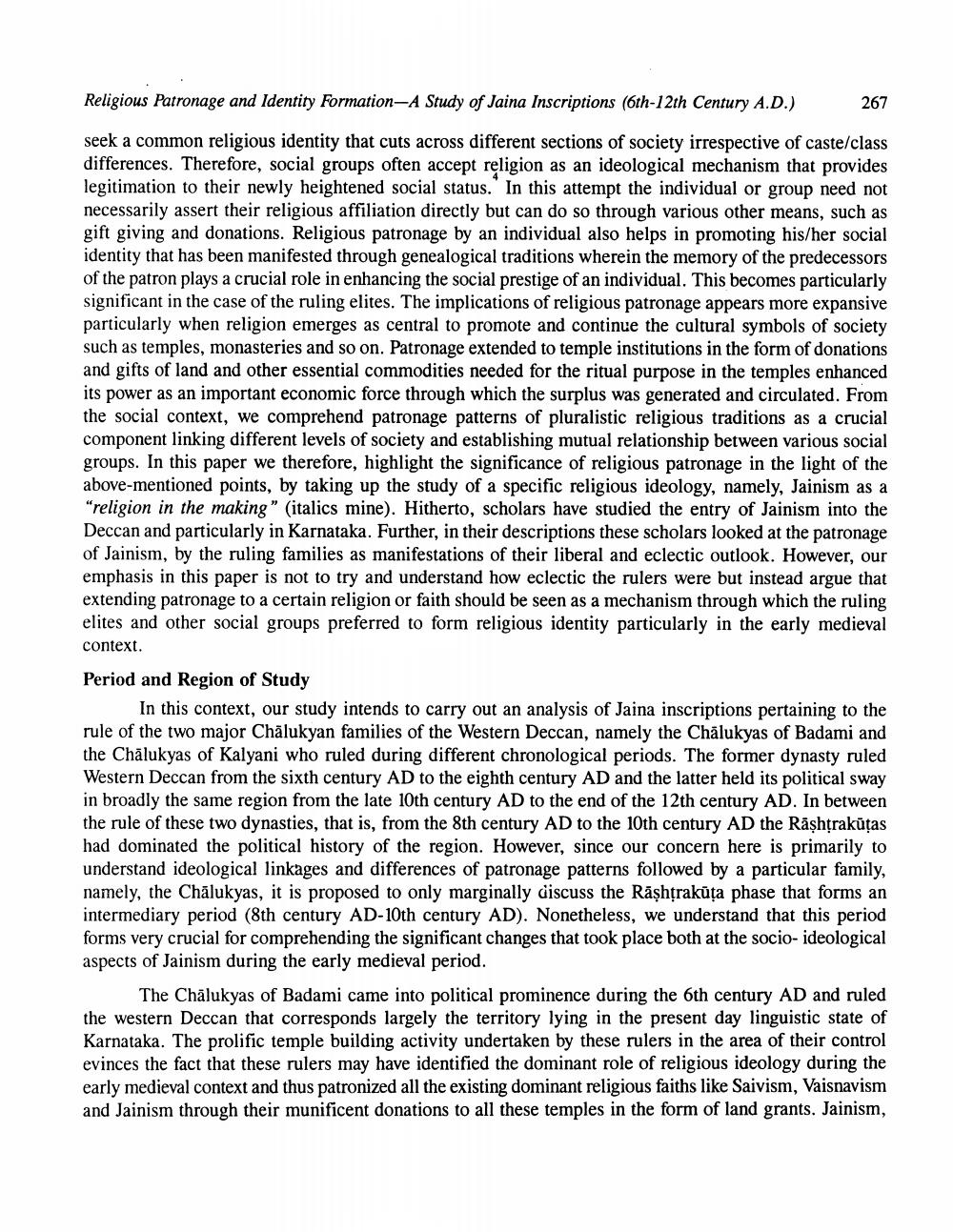________________
Religious Patronage and Identity Formation-A Study of Jaina Inscriptions (6th-12th Century A.D.)
267
seek a common religious identity that cuts across different sections of society irrespective of caste/class differences. Therefore, social groups often accept religion as an ideological mechanism that provides legitimation to their newly heightened social status. In this attempt the individual or group need not necessarily assert their religious affiliation directly but can do so through various other means, such as gift giving and donations. Religious patronage by an individual also helps in promoting his/her social identity that has been manifested through genealogical traditions wherein the memory of the predecessors of the patron plays a crucial role in enhancing the social prestige of an individual. This becomes particularly significant in the case of the ruling elites. The implications of religious patronage appears more expansive particularly when religion emerges as central to promote and continue the cultural symbols of society such as temples, monasteries and so on. Patronage extended to temple institutions in the form of donations and gifts of land and other essential commodities needed for the ritual purpose in the temples enhanced its power as an important economic force through which the surplus was generated and circulated. From the social context, we comprehend patronage patterns of pluralistic religious traditions as a crucial component linking different levels of society and establishing mutual relationship between various social groups. In this paper we therefore, highlight the significance of religious patronage in the light of the above-mentioned points, by taking up the study of a specific religious ideology, namely, Jainism as a "religion in the making" (italics mine). Hitherto, scholars have studied the entry of Jainism into the Deccan and particularly in Karnataka. Further, in their descriptions these scholars looked at the patronage of Jainism, by the ruling families as manifestations of their liberal and eclectic outlook. However, our emphasis in this paper is not to try and understand how eclectic the rulers were but instead argue that extending patronage to a certain religion or faith should be seen as a mechanism through which the ruling elites and other social groups preferred to form religious identity particularly in the early medieval context. Period and Region of Study
In this context, our study intends to carry out an analysis of Jaina inscriptions pertaining to the rule of the two major Chalukyan families of the Western Deccan, namely the Chalukyas of Badami and the Chālukyas of Kalyani who ruled during different chronological periods. The former dynasty ruled Western Deccan from the sixth century AD to the eighth century AD and the latter held its political sway in broadly the same region from the late 10th century AD to the end of the 12th century AD. In between the rule of these two dynasties, that is, from the 8th century AD to the 10th century AD the Rāşhțrakūtas had dominated the political history of the region. However, since our concern here is primarily to understand ideological linkages and differences of patronage patterns followed by a particular family, namely, the Chalukyas, it is proposed to only marginally discuss the Rāşhțrakūta phase that forms an intermediary period (8th century AD-10th century AD). Nonetheless, we understand that this period forms very crucial for comprehending the significant changes that took place both at the socio-ideological aspects of Jainism during the early medieval period.
The Chālukyas of Badami came into political prominence during the 6th century AD and ruled the western Deccan that corresponds largely the territory lying in the present day linguistic state of Karnataka. The prolific temple building activity undertaken by these rulers in the area of their control evinces the fact that these rulers may have identified the dominant role of religious ideology during the early medieval context and thus patronized all the existing dominant religious faiths like Saivism, Vaisnavism and Jainism through their munificent donations to all these temples in the form of land grants. Jainism,




